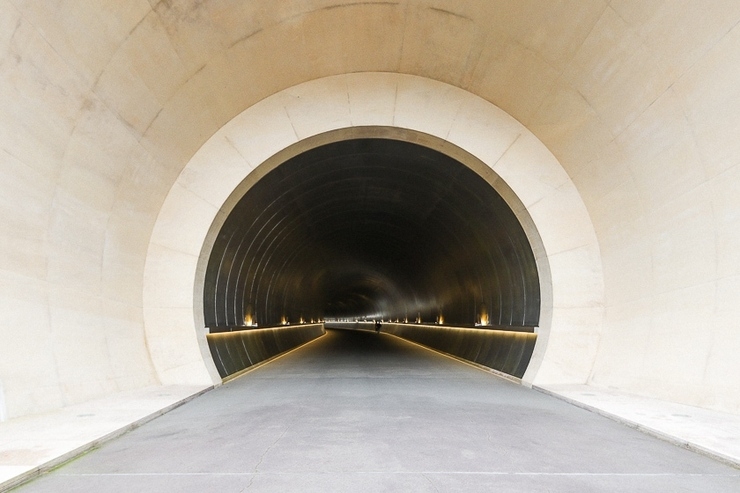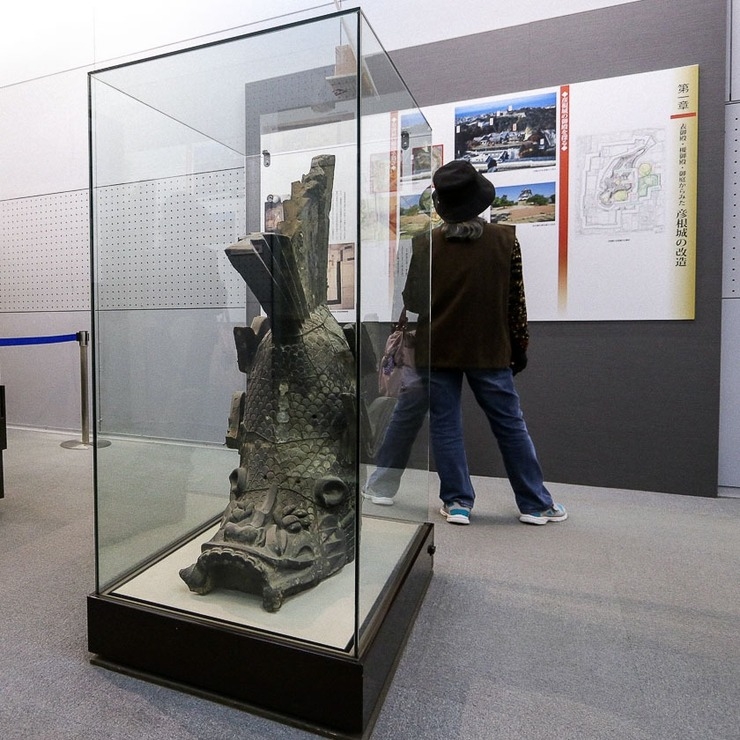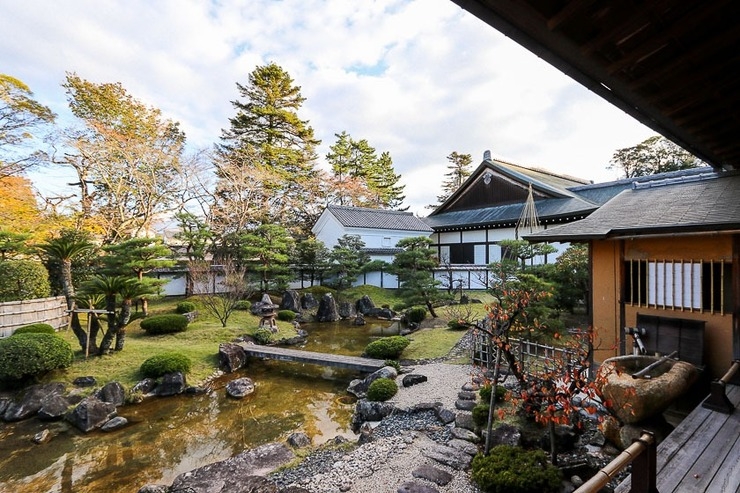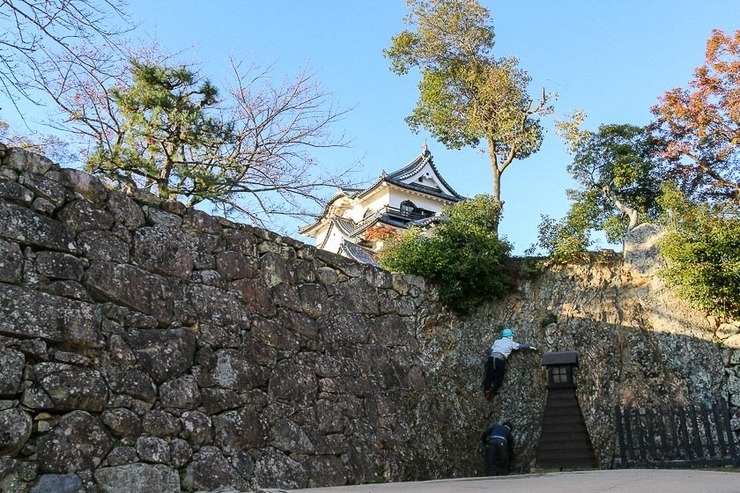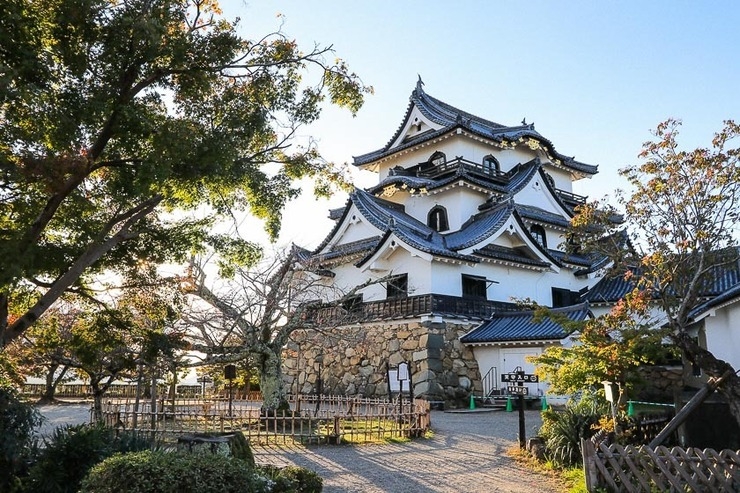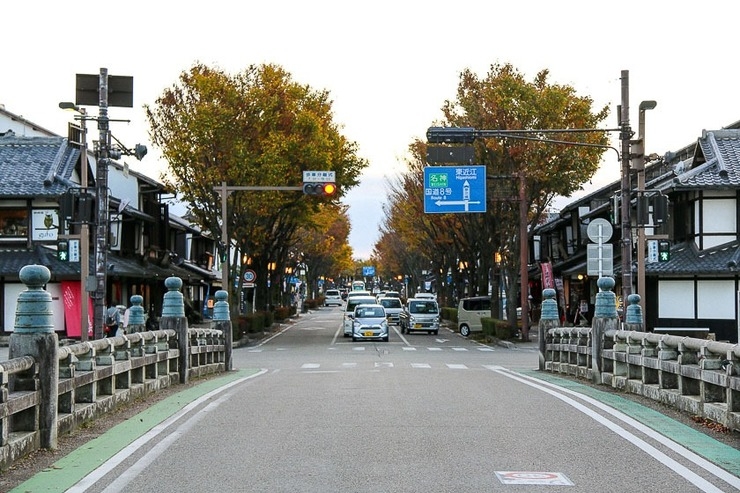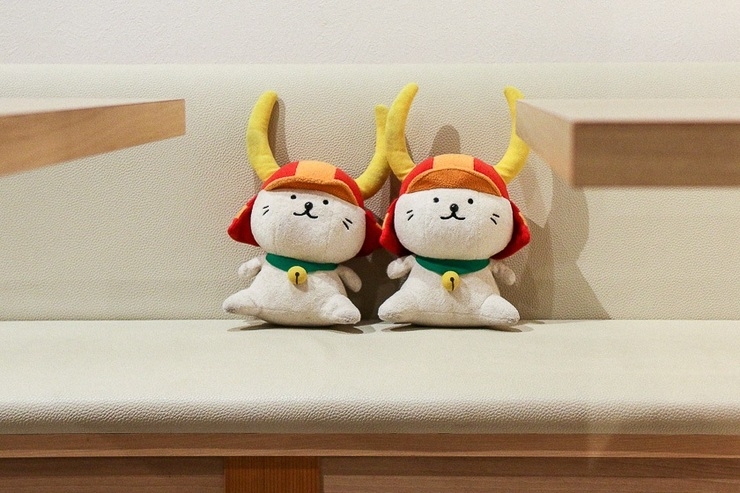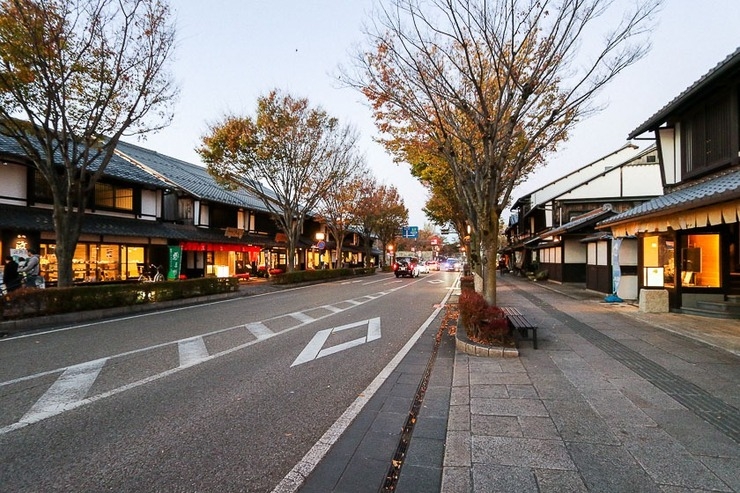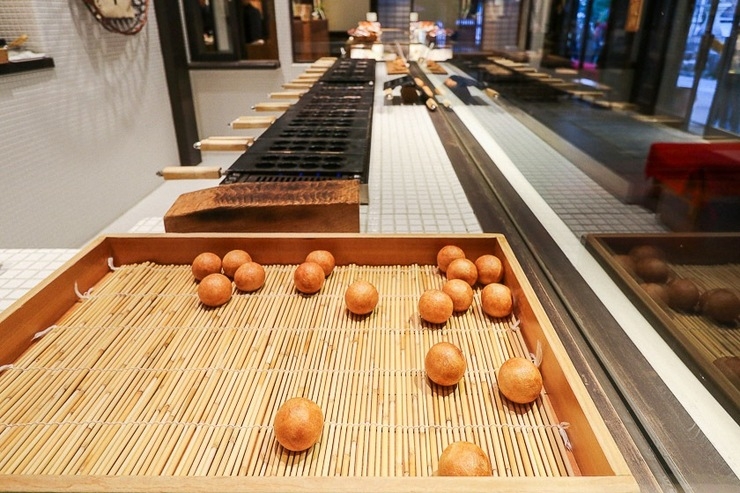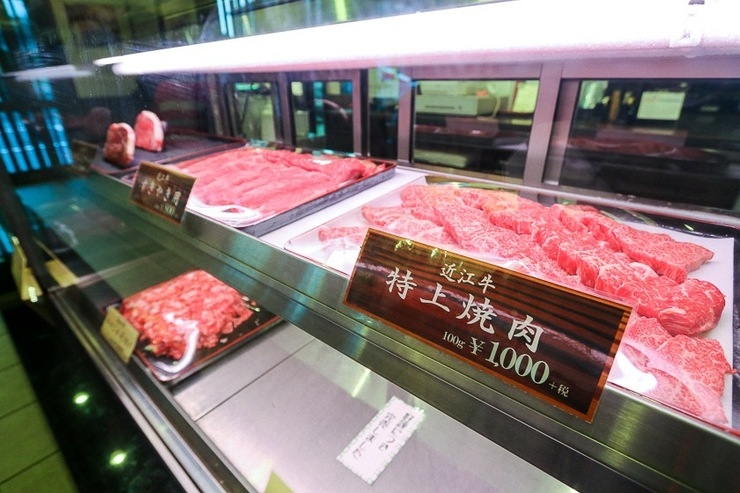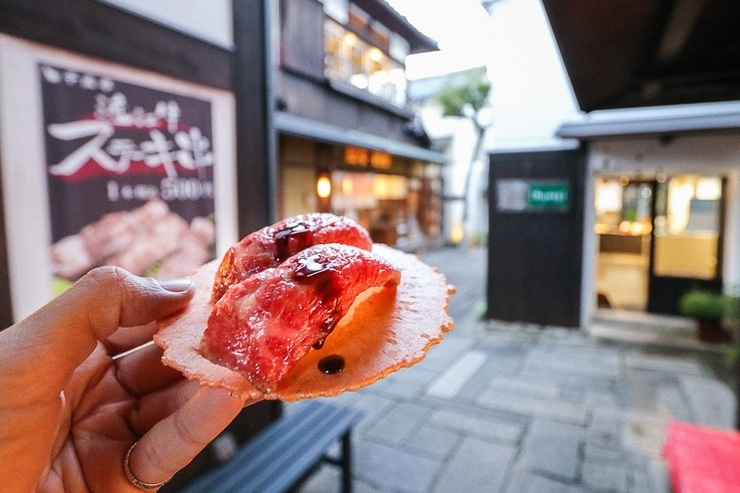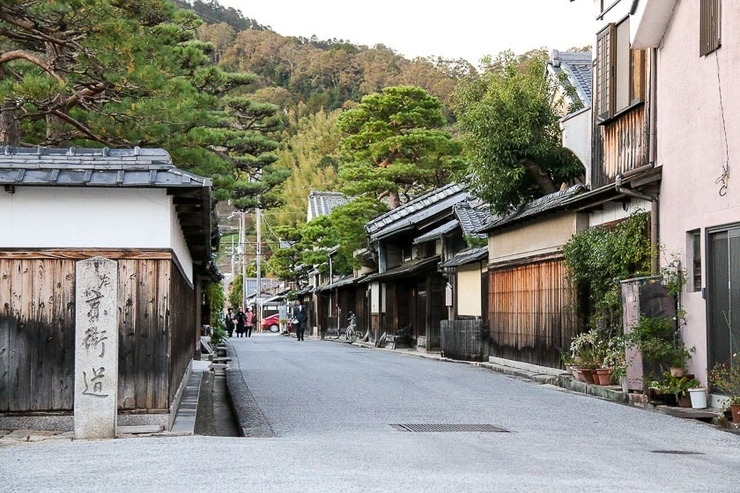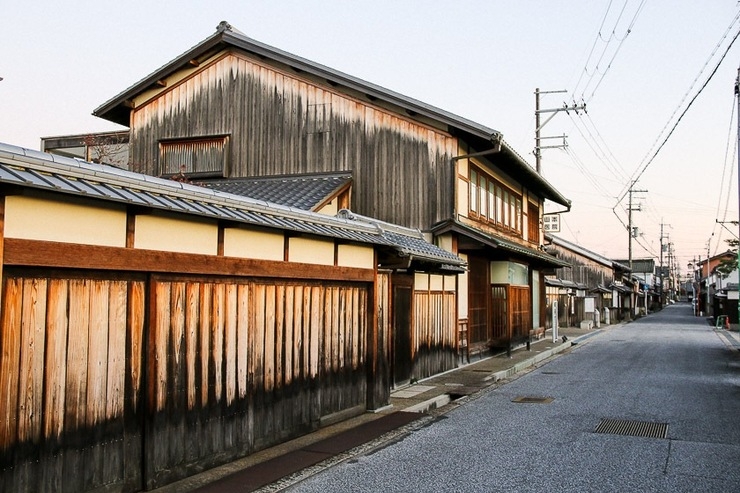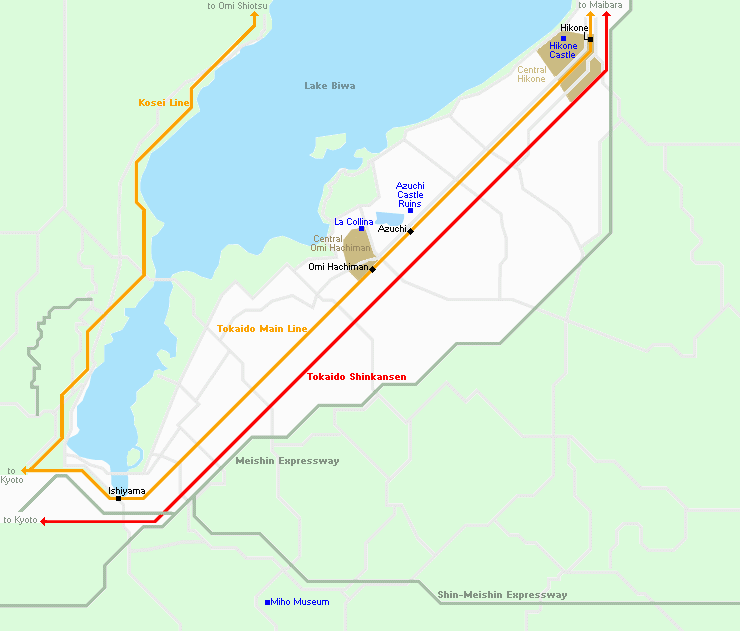The plan for the second day of my trip was to head to Azuchi to check out the Azuchi Castle Ruins, then spending most of the day at Omi Hachiman before heading back to Kyoto.

Early bird catches the worm
From Hikone, I took the train to Azuchi (320 yen one way, around 20 minutes, frequent departures) and walked to the castle ruins from the station. The 20-minute walk took me past a mix of residential areas and rice and vegetable fields. Rental bicycles are available from shops outside the station, but I decided to go on a morning walk instead.
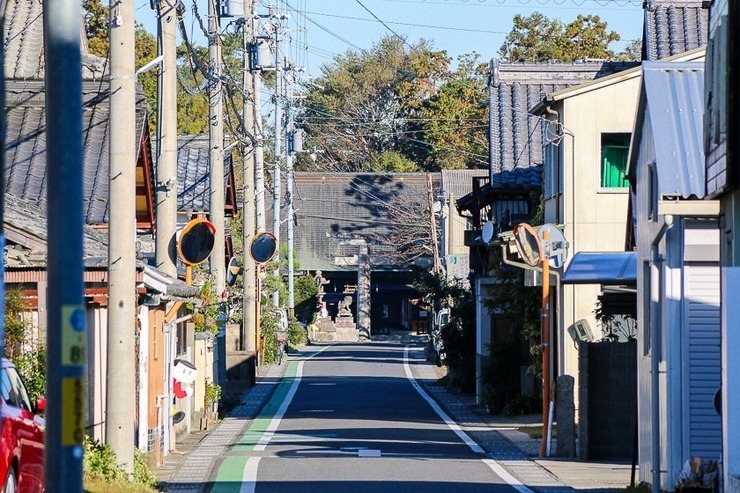
Shrine at the end of the road
The Azuchi Castle Ruins was one of my favourite places this trip. The castle was commissioned by Oda Nobunaga in 1576 during his mission to unify Japan, and the keep, which was Japan's first castle keep, was completed in just three years. It is believed that the keep was one of the most beautiful and grand structures at that time, a 7-story, 33-meter tall wooden structure with colored tiles and a roof of gold. However, in another three years after that, the entire castle complex was razed to the ground after Oda Nobunaga was betrayed by his subordinate Akechi Mitsuhide and committed ritual suicide (seppuku) in Kyoto.
Today, stone foundations can be seen on the way to the main entrance, and one could get a sense of how big the castle grounds used to be. Note that there are lots of steps on the castle grounds and this site may not be suitable for those with trouble walking. Despite having seen Hikone Castle the day before, I was still wowed by the ruins of the Azuchi Castle even though only the stone foundations and steps remain. As I walked up the small 199-meter tall mountain the castle keep was built on, I imagined the grandeur of the castle and the buildings that may have lined the path I was walking on, and thought about how busy the place must have been back in the day. Entry to the castle ruins cost 700 yen and it is open from 9:00 to 16:00.
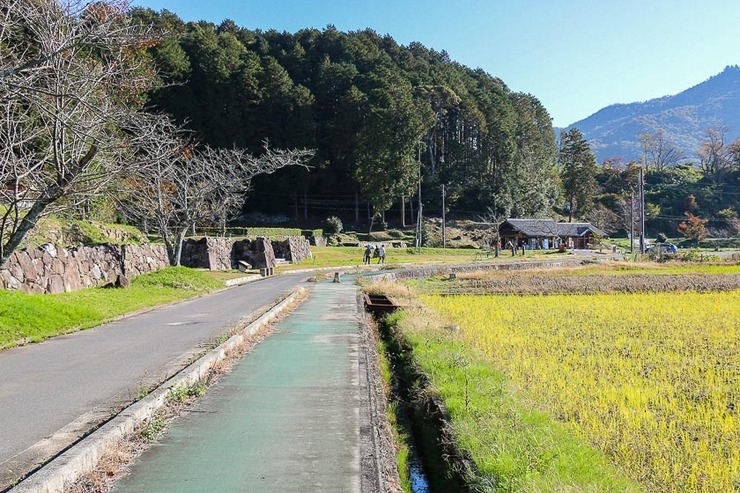
Base of the mountain the castle was built on

Stone walls still in place
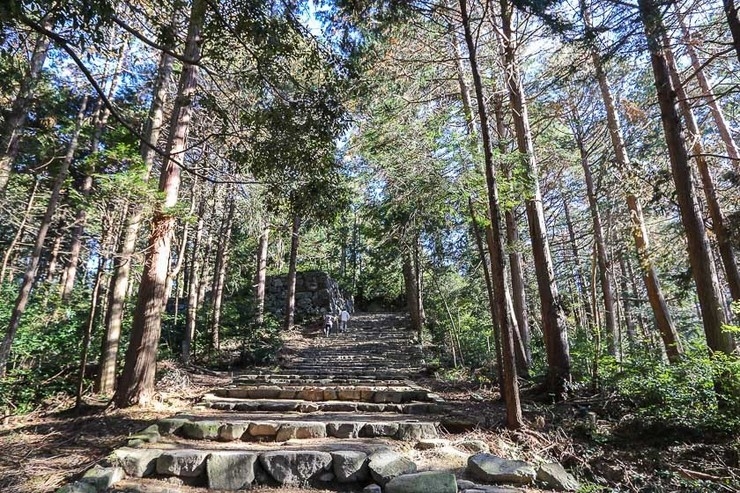
Trees everywhere and stone steps. This was about midway up to the top
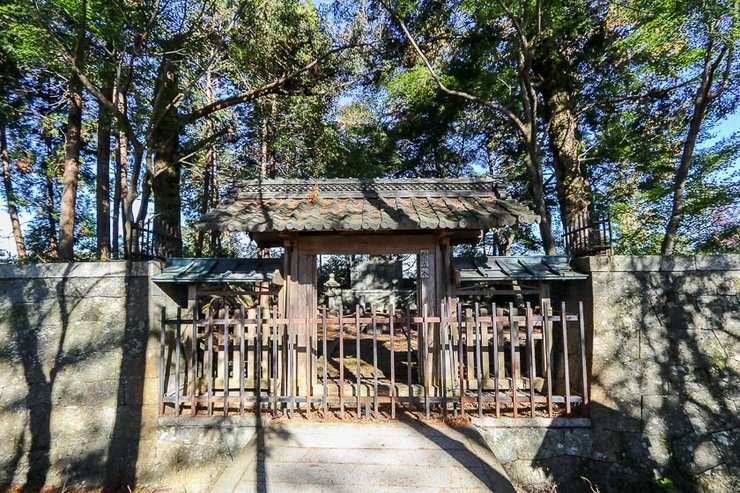
Mausoleum for Oda Nobunaga lies beyond this fence
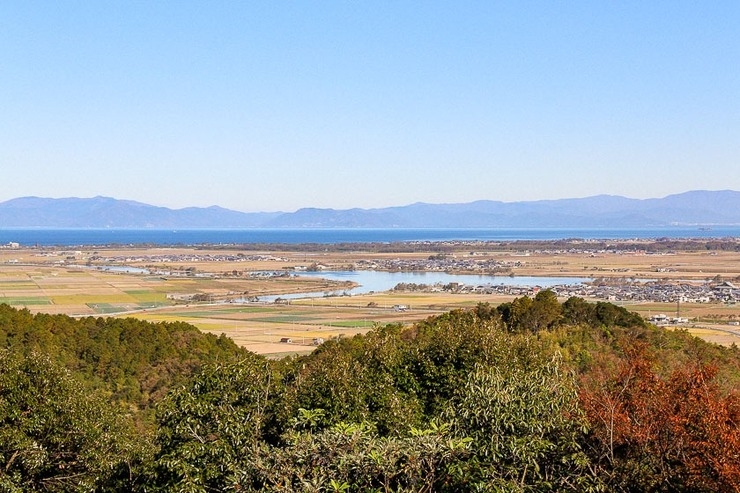
View from where the castle keep once stood. You can see Lake Biwa in the distance
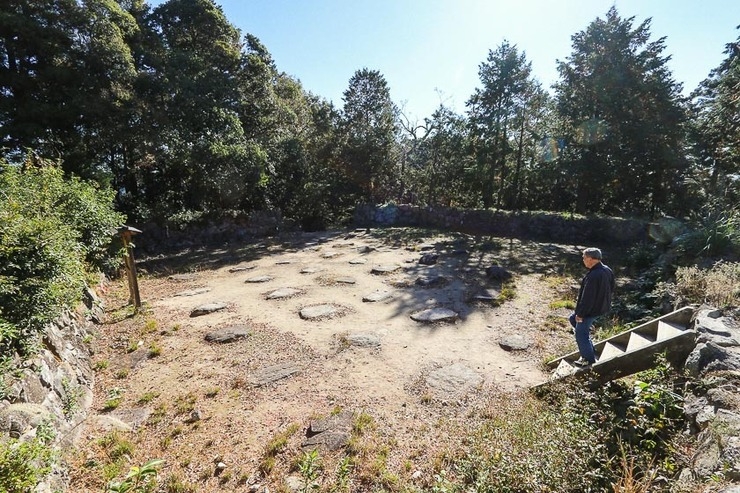
Only the stone base remains of the keep
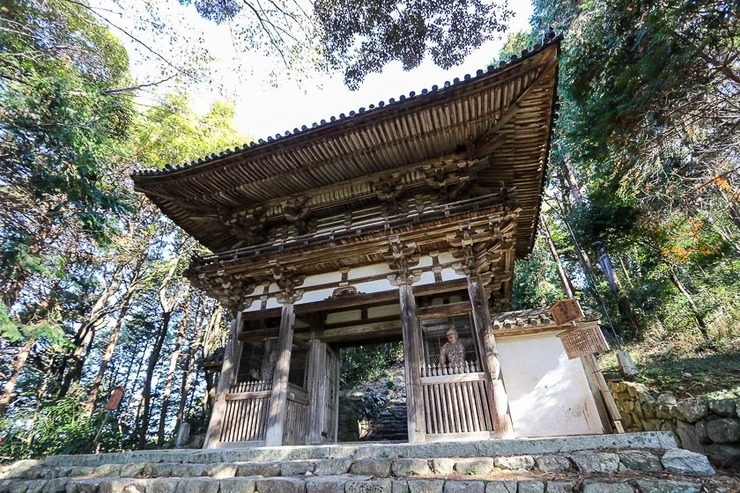
This gate is one of the few remaining structures on the castle grounds
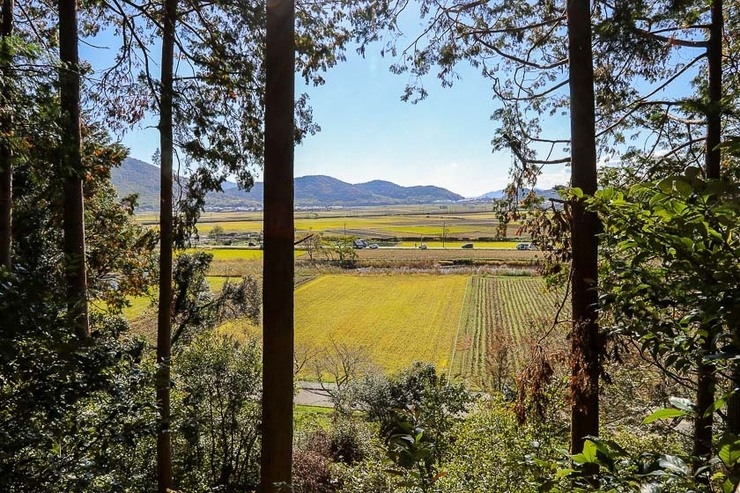
Rice fields surround the area
I got back on the train at Azuchi Station and took it one stop to Omi Hachiman (190 yen one way, 3 minutes, frequent departures) where I would spend the rest of the day. I kicked off my tour of Omi Hachiman by taking the bus (360 yen one way, about 15 minutes, 1-3 buses/hour) to La Collina Omihachiman, the beautiful flagship store of the Taneya Group which does both Japanese and Western style desserts. For those interested in design and architecture, La Collina Omihachiman is aesthetically pleasing, and the facility contains a number of unique buildings as well as a vegetable garden. In fact, the architect behind La Collina's landscape is Fujimori Terunobu, who did Shinshoji Temple in Fukuyama as well as the quirky teahouses in Chino, Nagano.
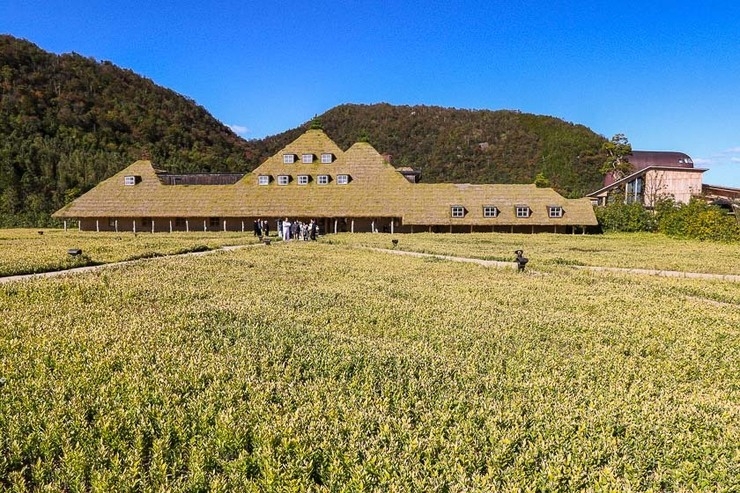
First view of La Collina Omihachiman
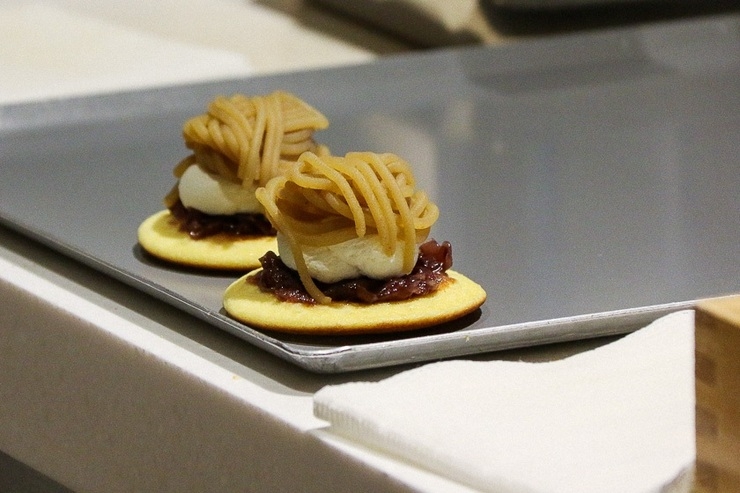
Made-to-order fresh chestnut dorayaki
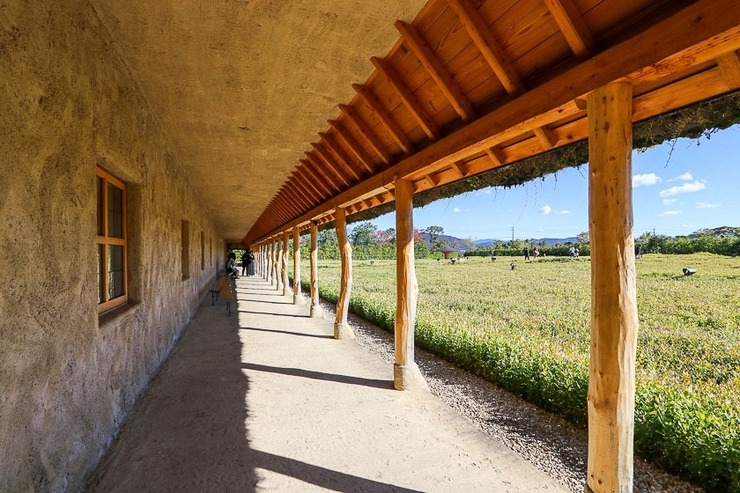
Loving the traditional look and the lines here
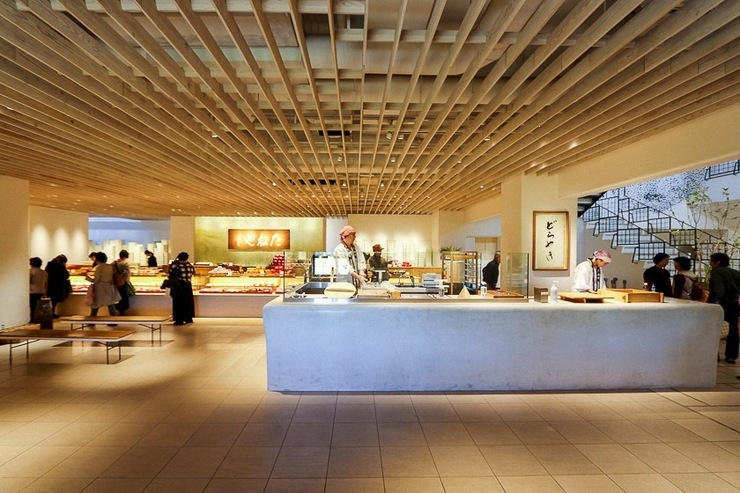
Taneya is the Japanese sweets side of business
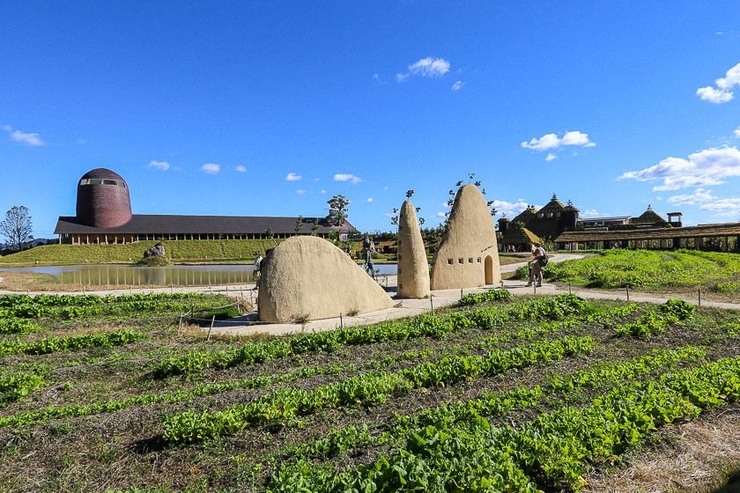
On the grounds of La Collina Hachiman, the vegetable garden and the quirky ocarina looking structures
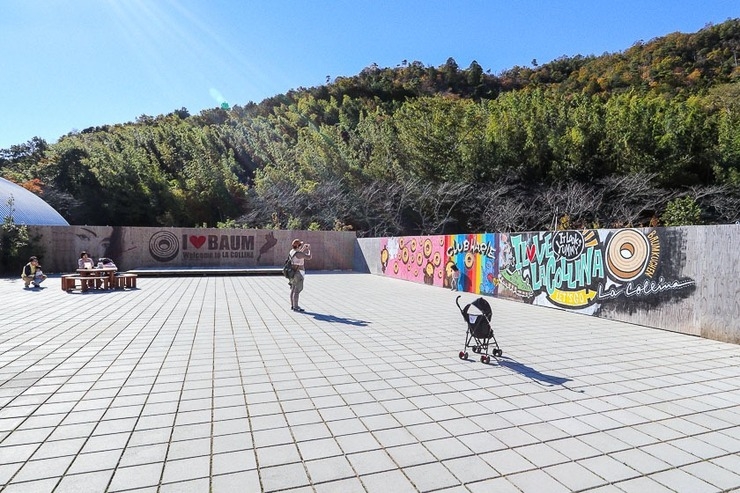
Designed street art
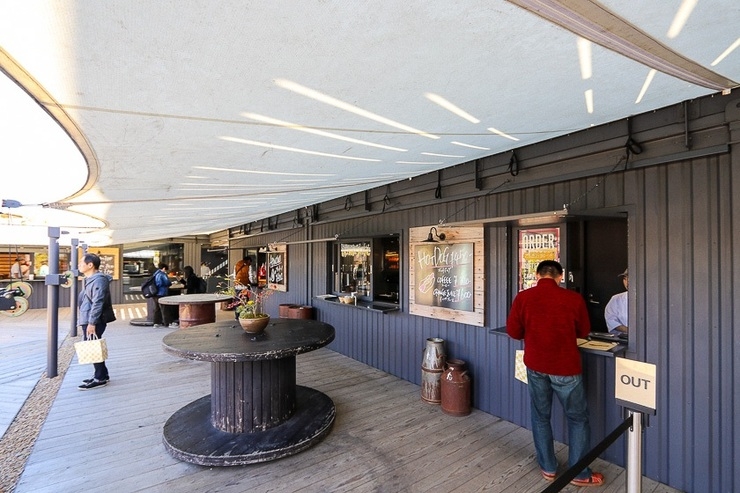
Savoury foods sold here
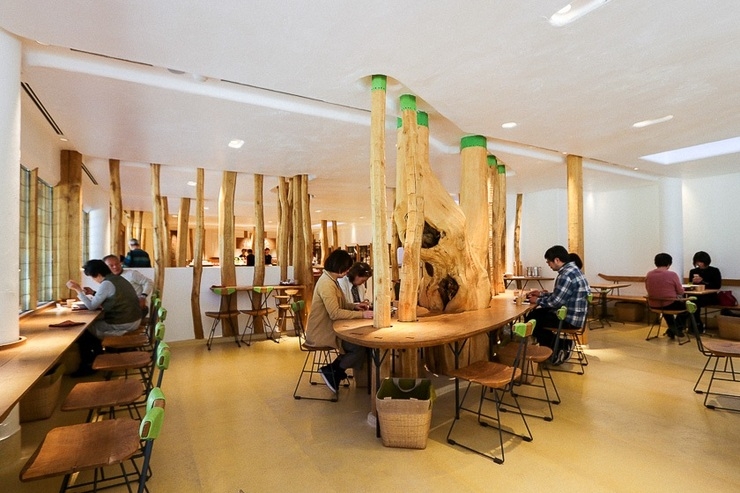
Inside one of the few restaurants on site
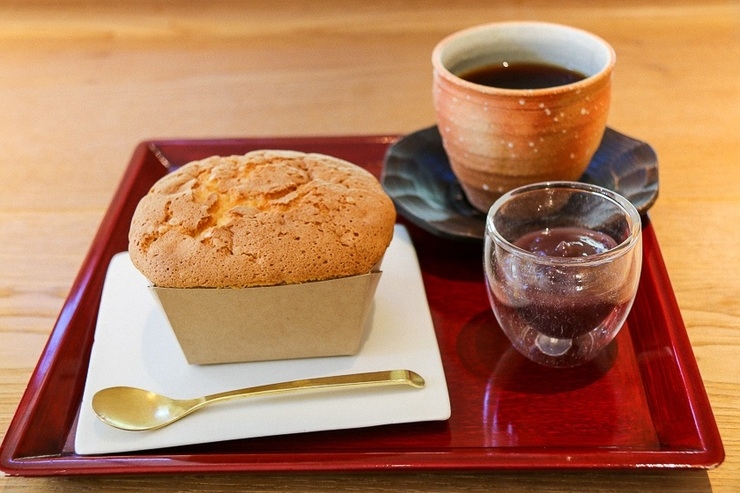
Went for a freshly baked castella cake which was so good I don't think I can ever go back to eating the normal castella anymore
Then, it was back on the bus to head into central Omi Hachiman where I went for a boat cruise along the waterways in town, took the ropeway up Mt Hachiman where a castle once stood, checked out the grand Himure Hachimangu, a shrine that is said to have been built during the Heian Period. All these places were all within walking distance from one another, and was a good way to attempt to work off the calories consumed at La Collina earlier.
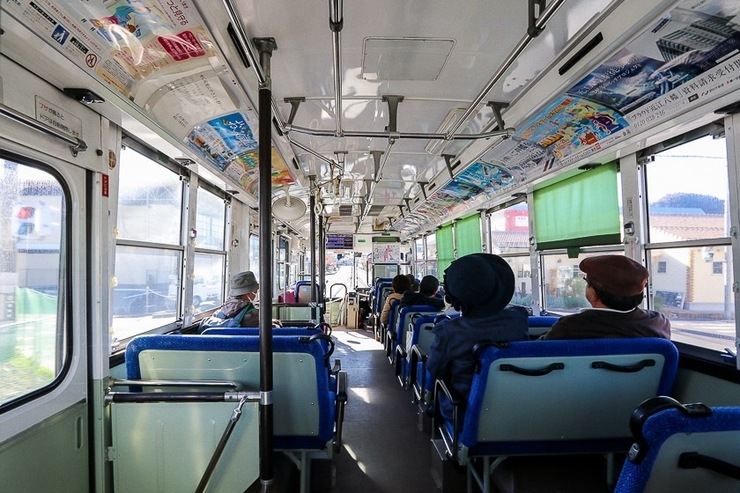
On the bus
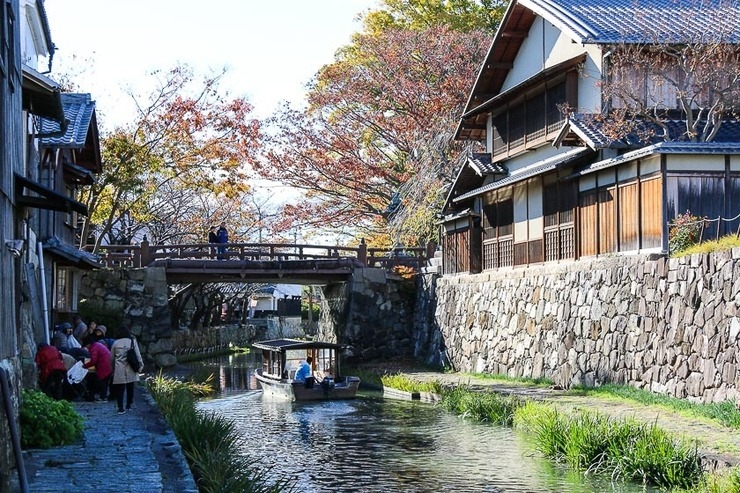
Waterways in town were used by merchants to move their goods
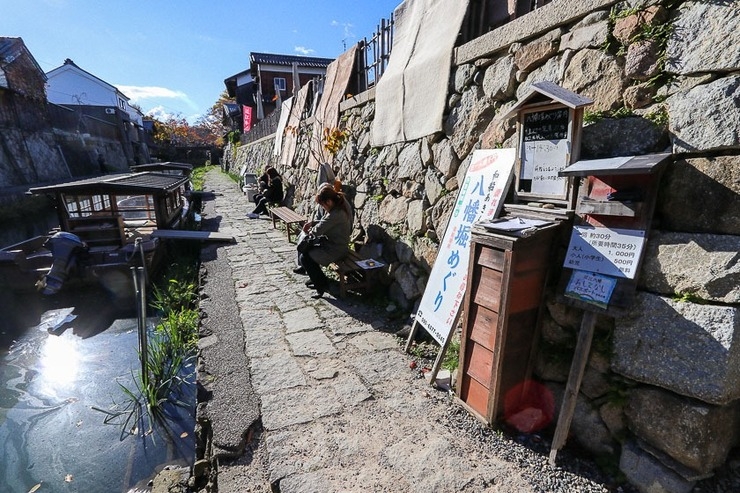
The only way to sign up for a boat ride is to check the time on the whiteboard and write your name on the paper
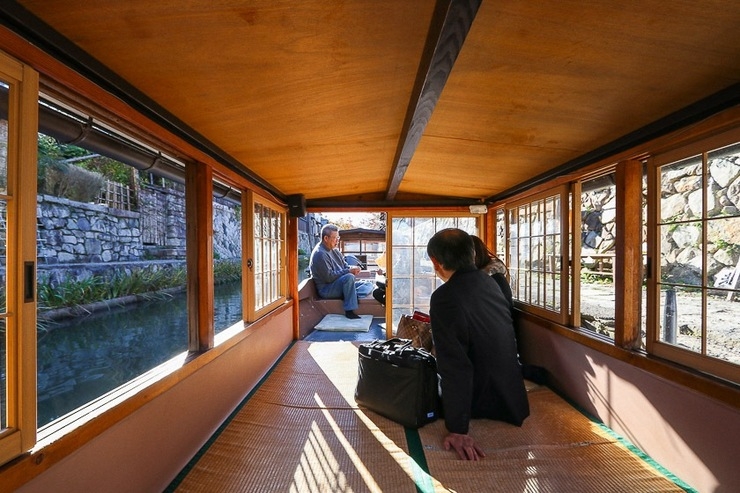
All aboard

There is commentary about the waterway on the boat

Quite a lovely way to spend 30 minutes
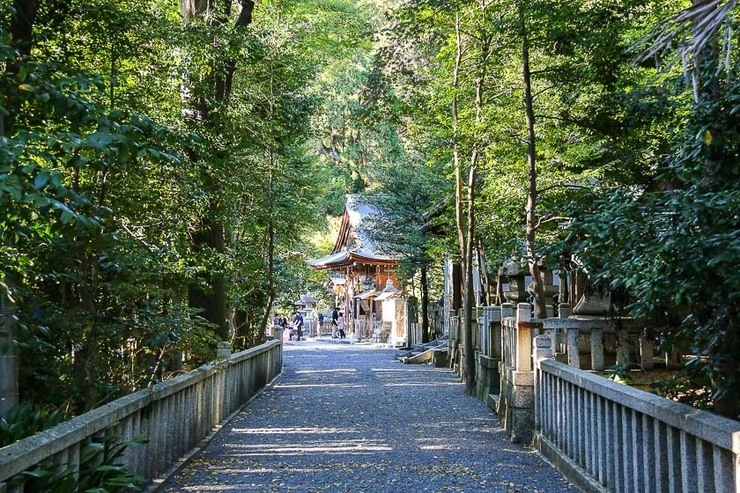
Himure Hachimangu at the end of greenery
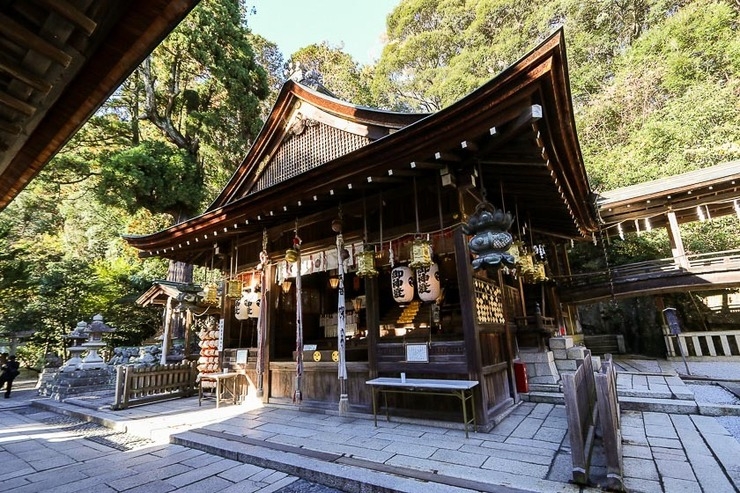
It was quite a lovely shrine
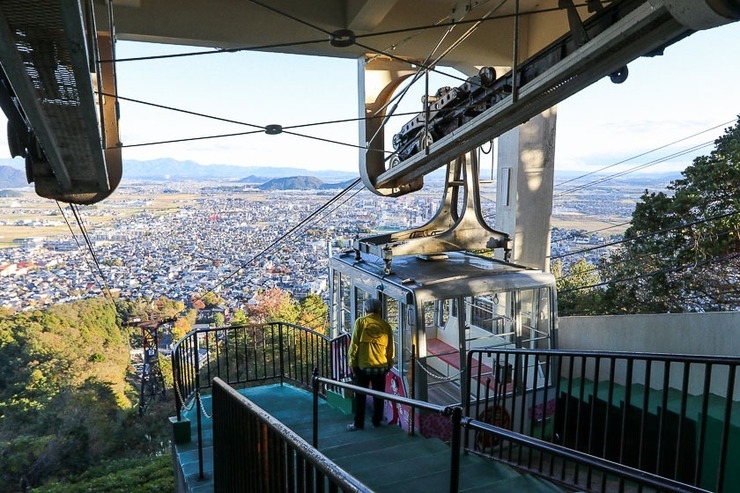
Ropeway at the top of the mountain
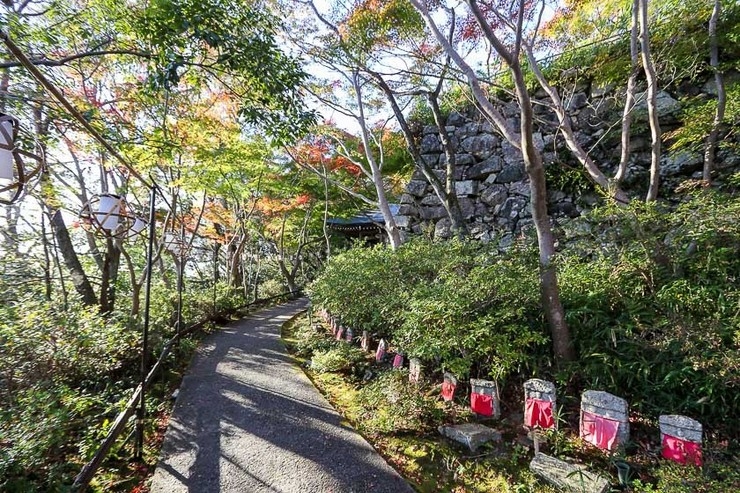
Walking path around the top of the mountain takes about 30 minutes
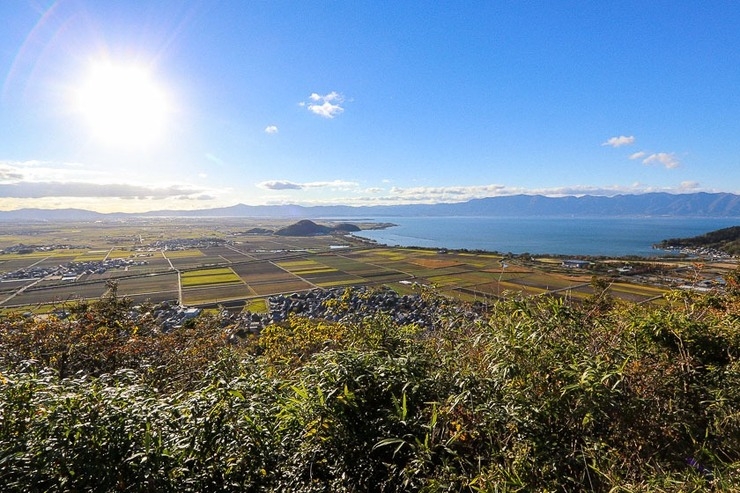
Take a walk and be rewarded with this view of the town and Lake Biwa

That little mountain in the middle is where the Azuchi Castle Ruins stand
Before ending my trip, I took my last opportunity to eat some Omigyu nigiri as a final memento before taking a walk down Shinmachi-dori, Omi Hachiman's old merchant street, and walked back to Omi Hachiman Station. Just like that, my two-day trip came to an end. I visited some beautiful locations like the Miho Museum and La Collina Omihachiman, felt like I had uncovered some hidden secrets at the Azuchi Castle Ruins, checked a visit to one of Japan's original castle keeps off, and had pretty good vantage points of Lake Biwa all through this trip. I really enjoyed this trip and wouldn't mind doing it all over again, and perhaps next time include a visit to the museum that houses a reconstruction of a part of Azuchi Castle.
Till the next trip!


